20 April 2015. Bronte, ON. I always say that I don’t chase rare birds; but then I feel I have to add – unless it’s a real rarity and if it’s not too far from home. Some cases in point of rarities that I made an extra effort for would be last April’s King Eider or a previous May’s Kirtland Warbler; I made special trips for both of them and was rewarded with amply soul-satisfying moments.
Today, following a modestly interesting day which started very wet and windy, and which included a group of nine Rusty Blackbirds, a Northern Harrier, a Broad-winged Hawk and a Common Raven, I got word that a bunch of American Avocets had shown up at a nearby beach. Before I start gushing about the avocets, let me briefly note that Rusty Blackbirds are becoming increasingly rare and despite their undeniably sombre appearance, are kind of special. The harrier, the hawk and the raven (a trio like that belong in Alice in Wonderland) are all good sightings, not especially rare, just unusual birds that catch my attention and frequently play starring roles.
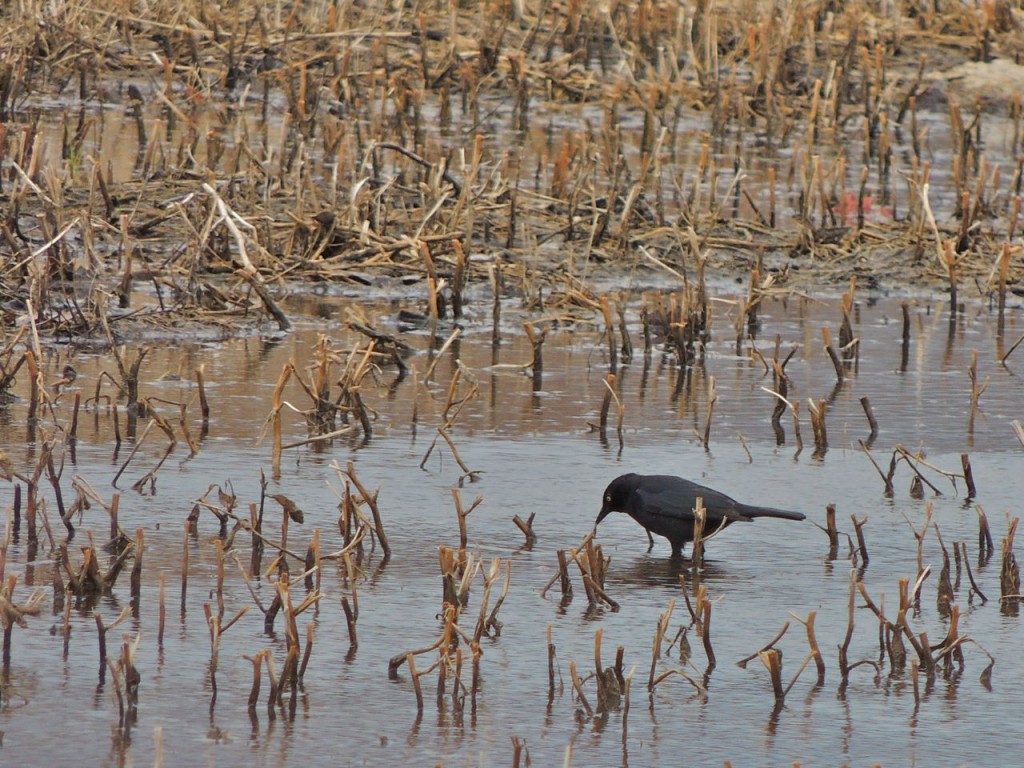
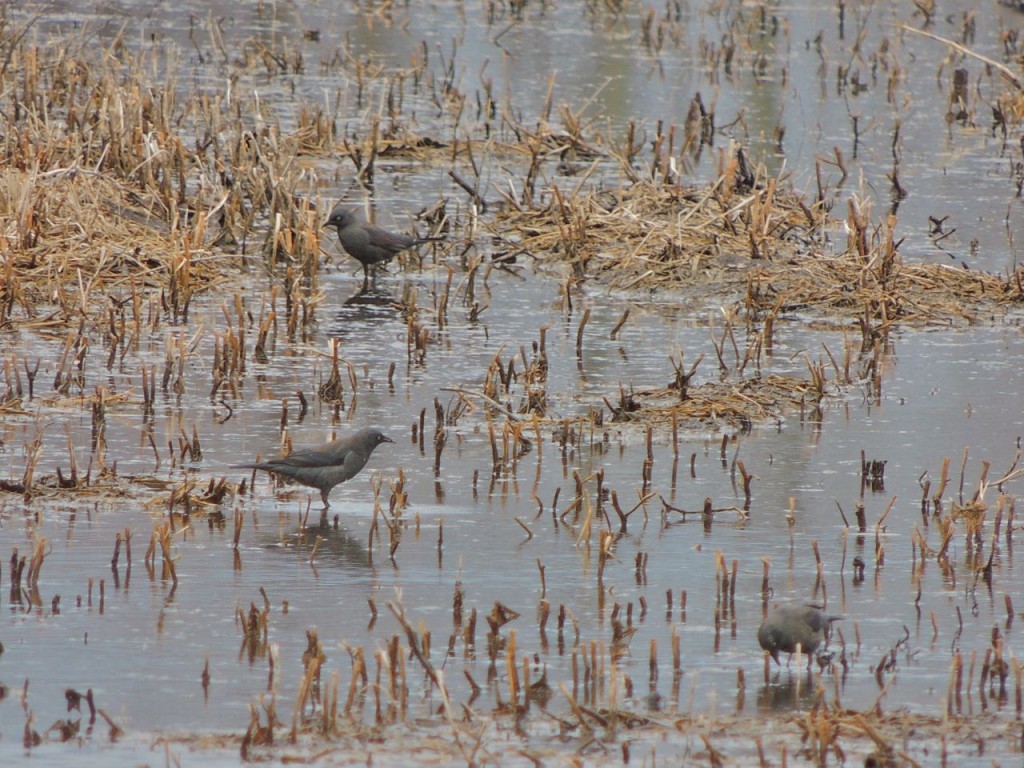
American Avocets should always be worth making an extra effort to see, but it was close to a mealtime when I heard about them and I had a meeting to attend later on. I set aside any thought that I should go and look for them, but somehow it just wouldn’t go away. Realizing that with a bit of planning, I could eat, get to the avocet site and still be at my meeting on time, off we went. I say we because my wife came along with me; she’s not a birder and her bird-fascination soon ebbs, but she has a soft spot for avocets and carries a vivid memory of a sighting one stormy day some thirty-two years ago. My diary tells this story. “1983. 2 May. A warm day with incredible storm activity. V. strong winds, tornadoes in SW Ont. The storm has resulted in migration chaos. Off McCollom Rd near the lake and adjacent to 50 Point park, in a wet ploughed field, were 7 avocets. V. unusual for this area…”. I don’t think I’ve seen more than one or two avocets since that date. It’s not that they’re particularly rare, in fact they’re relatively common in the western half of the continent.
With that bit of history in mind and cognizant that today, like that early day in May 1983, was a day of strong south winds and unsettled skies, we went to see if we could locate these birds. We found them easily enough, an orderly crowd of about twenty-four individuals, standing around, waiting for the winds to die down to let them get on with their long-distance journey.
It’s hard not to gush over American Avocets as perhaps the prettiest shorebirds in Christendom; prettier than their European counterparts who lack the delicious cinnamon head and breast, prettier than the more monochromatic (but just as charming) Black-necked Stilts and perhaps even prettier than Wilson’s Phalaropes in breeding plumage. Last November, I suggested that Wilson’s Phalaropes belong in the fine-china category of shorebirds, and today’s birds set me wondering whether avocets belong there too. But somehow they’re a little too gregarious and long-legged to be china, they’d probably get chipped too easily. I think of them as perhaps more like ballerinas: poised, elegant, graceful. What do you think?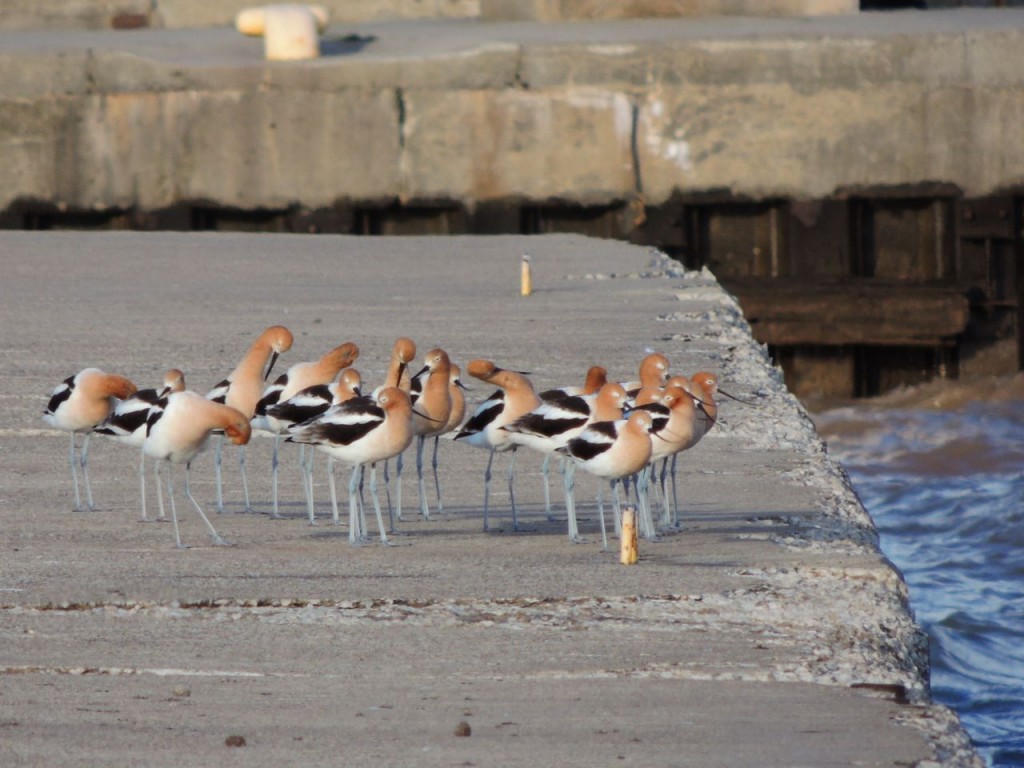
Here they are. There were about twenty four of them.
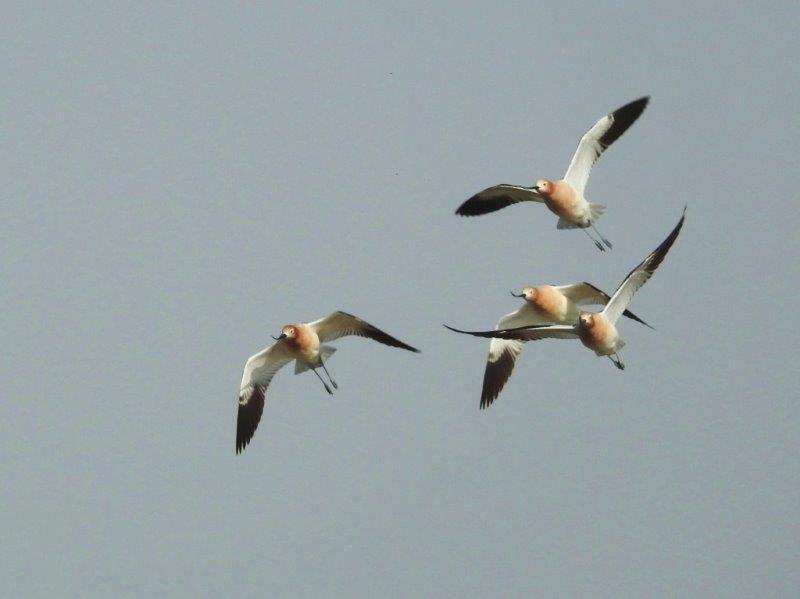
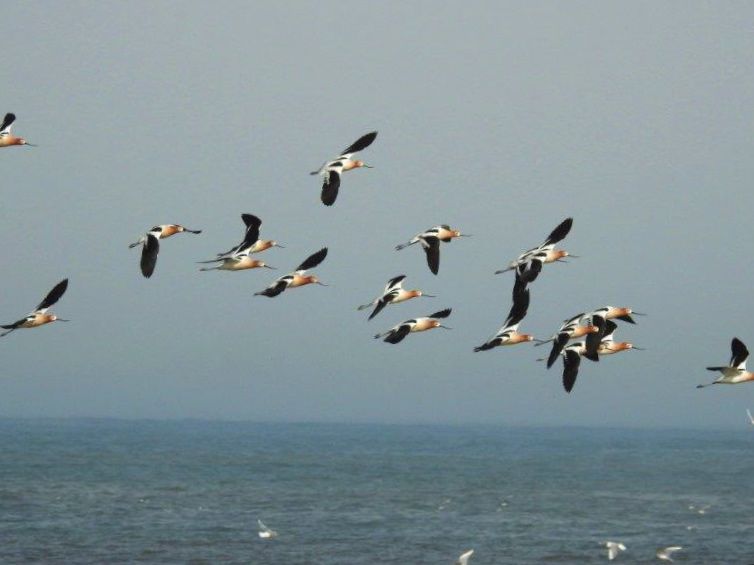
Well done post! I had my first rusties last week and that slate blue coloring of the females is really unique.
The Avocets look to me like a combo of ballerina/”Ministry of Funny Walks” (Monty Python.) I mean this in the most beautiful way possible!